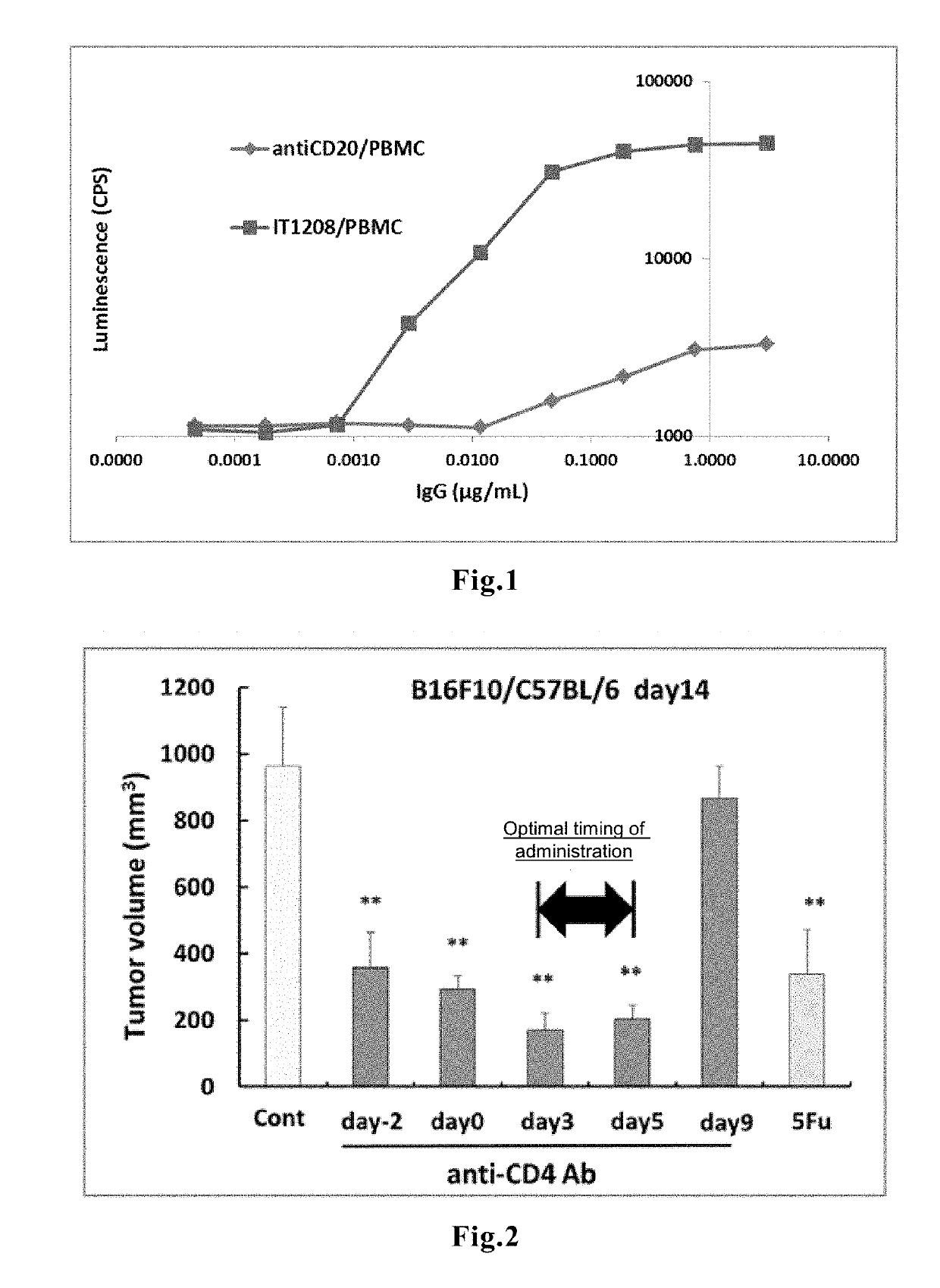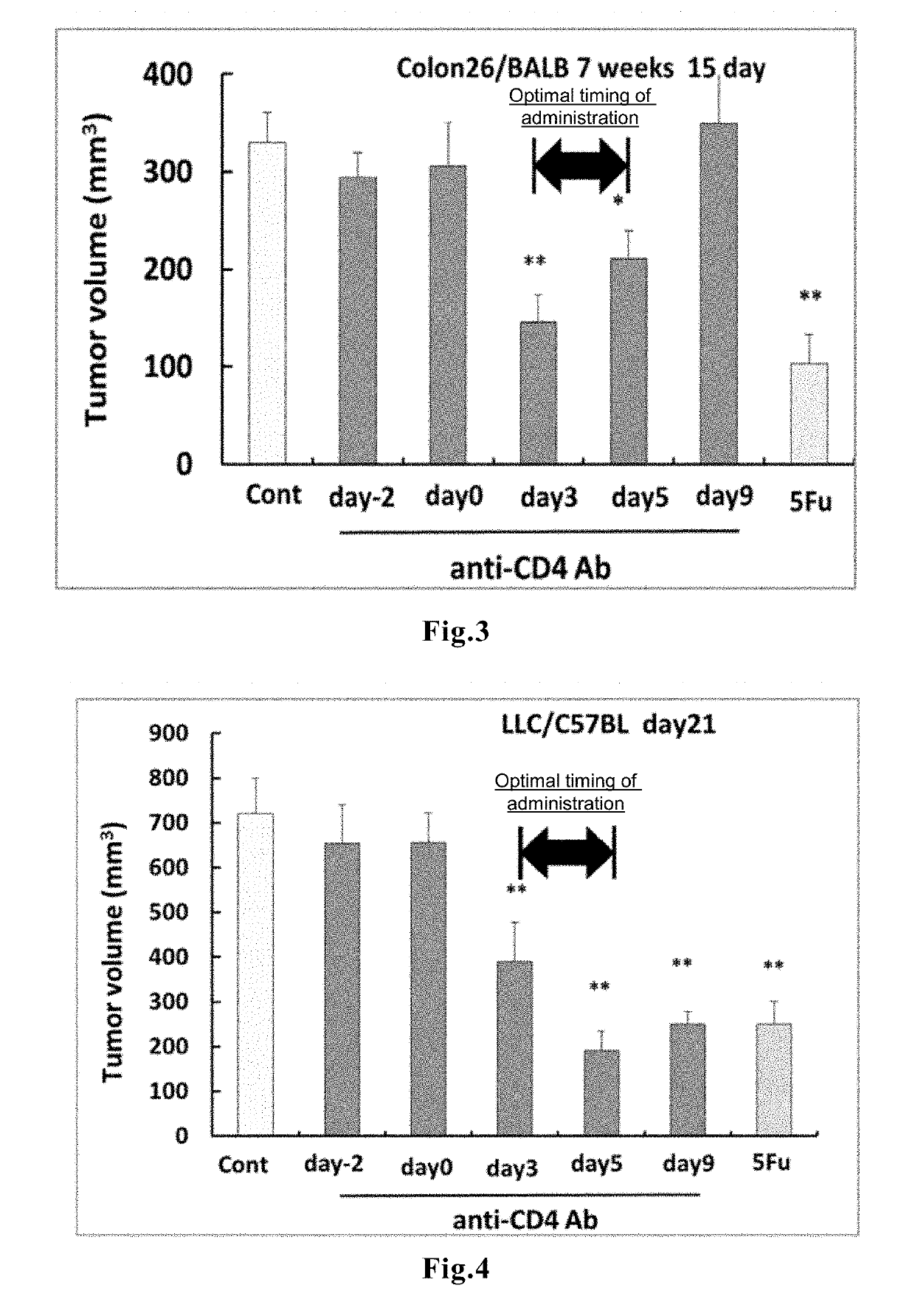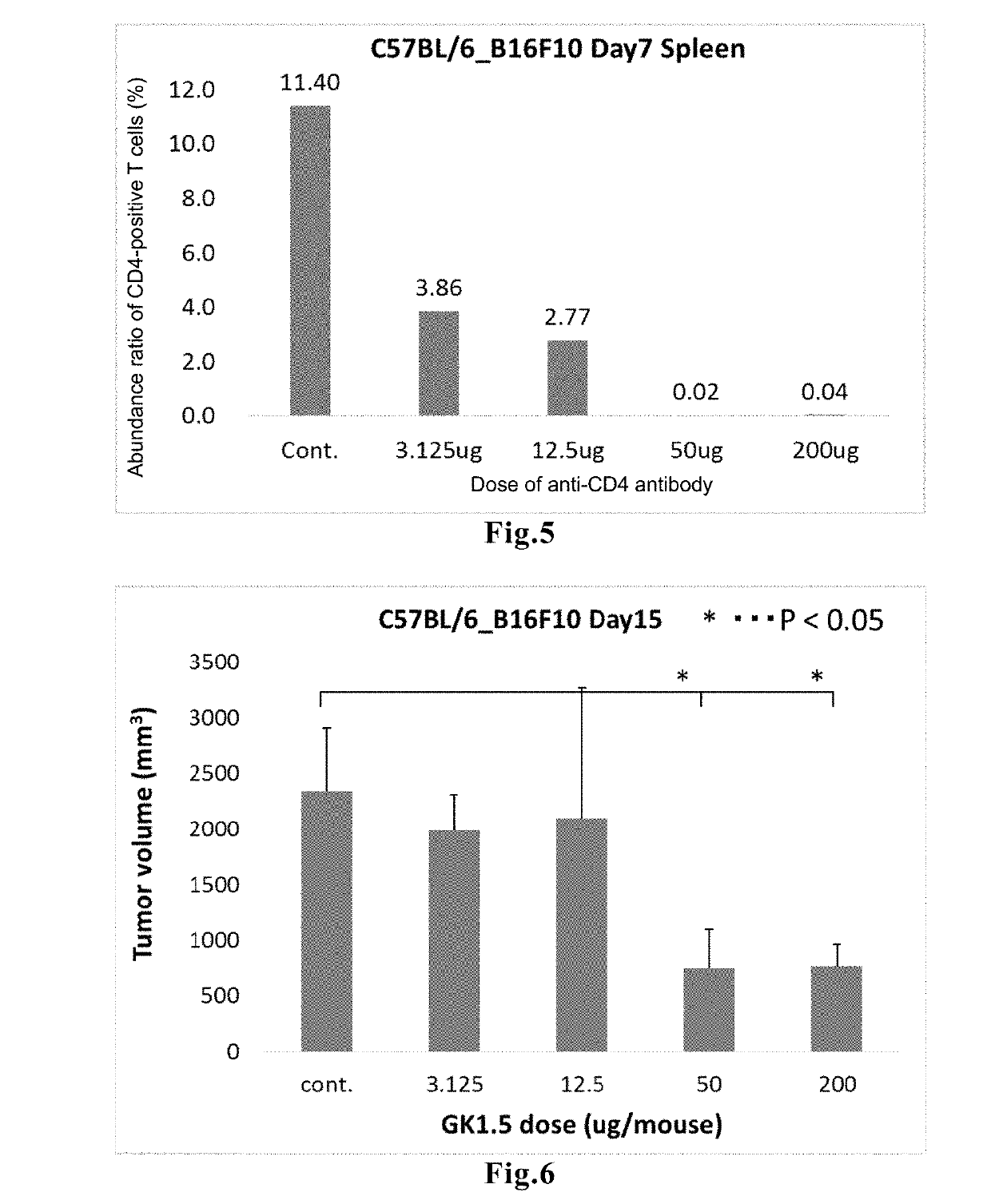Therapeutic agent for solid cancer
a solid cancer and therapy agent technology, applied in the field of solid cancer therapy agents, can solve the problems of ineffective cancer immunotherapy for all patients, urgent task of research and development of measures to increase their effectiveness, and can be proposed strategies, etc., to achieve sufficient cytotoxic activity, suppress the metastasis and recurrence of solid cancer, and enhance the destruction of cancer cells
- Summary
- Abstract
- Description
- Claims
- Application Information
AI Technical Summary
Benefits of technology
Problems solved by technology
Method used
Image
Examples
example 1
on of Anti-CD4 Antibody Having ADCC Activity
[0089]According to the method described in WO 2010 / 074266, an anti-human CD4 humanized antibody IT1208 having enhanced ADCC activity (wherein HV2 and LV0 described in WO 2010 / 074266 are contained as the variable region; subtype, IgG1) was prepared. The antibody binding activity as measured using Biacore T100™ was KD (nM)<0.009, which indicates high binding activity.
[0090]Measurement of the ADCC activity of IT1208 was carried out under the following conditions, according to the protocol for an ADCC activity assay kit sold by Promega. After gently mixing 12,500 PBMCs derived from a healthy individual, anti-CD4mAb (IT1208), and 75,000 ADCC Bioassay Effector cells contained in the Promega kit, the cells were cultured in a CO2 incubator at 37° C. for 6 hours. The luminescent reagent Bio-Glo reagent was added to the culture, and culturing was then continued at room temperature for 20 minutes, followed by measuring chemiluminescence using a lumin...
example 2-1
nti-CD4 Antibody Against Mouse Solid Cancer Model—Study on Timing of Administration
[0092]A mouse melanoma cell line B16F10 (5×105 cells / mouse) was subcutaneously transplanted into the right abdomen of C57BL / 6 mice (female, 7 weeks old, n=8); a mouse colon cancer cell line Colon 26 (2×105 cells / mouse) was subcutaneously transplanted into the right abdomen of BALB / c mice (male, 7 weeks old, n=8); and a mouse lung cancer cell line LLC (5×105 cells / mouse) was subcutaneously transplanted into the right abdomen of C57BL / 6 mice (female, 7 weeks old, n=8). On Day −2 (two days before the cancer cell transplantation), Day 0 (=day of cancer cell transplantation), Day 3, Day 5, Day 9, or Day 12, 0.2 mg of an anti-CD4 antibody (GK1.5; an antibody known to be capable of causing depletion of CD4+ cells in the mouse body by the CDC activity; manufactured by BioXcell) was intraperitoneally administered at one time. The solid tumor diameter was measured on Day 14, and the tumor volume was calculated ...
example 2-2
p Between Abundance Ratio of CD4+ T Cells and Antitumor Effect
[0095]The mouse melanoma cell line B16F10 (5×105 cells / mouse) was subcutaneously transplanted into the right abdomen of C57BL / 6 mice (female, 7 weeks old, n=8) (Day 0=day of cancer cell transplantation). On Day 5, 3.125 μg, 12.5 μg, 50 μg, or 200 μg of the anti-CD4 antibody was administered (negative control group: no antibody was administered).
[0096]Two days after the antibody administration (Day 7), spleens were removed from three mice in each group, and the abundance ratio of CD4+ T cells among lymphocytes extracted therefrom was determined. The results are shown in FIG. 5. In the groups in which 3.125 μg or 12.5 μg of the anti-CD4 antibody was administered, 3.86% or 2.77% of CD4+ T cells were remaining, respectively (negative control group: 11.4%). In contrast, in the groups in which 50 μg or 200 μg of the antibody was administered, the ratio was 0.02% or 0.04%, respectively, indicating complete elimination of those c...
PUM
| Property | Measurement | Unit |
|---|---|---|
| weight | aaaaa | aaaaa |
| drug resistance | aaaaa | aaaaa |
| volume | aaaaa | aaaaa |
Abstract
Description
Claims
Application Information
 Login to View More
Login to View More - R&D
- Intellectual Property
- Life Sciences
- Materials
- Tech Scout
- Unparalleled Data Quality
- Higher Quality Content
- 60% Fewer Hallucinations
Browse by: Latest US Patents, China's latest patents, Technical Efficacy Thesaurus, Application Domain, Technology Topic, Popular Technical Reports.
© 2025 PatSnap. All rights reserved.Legal|Privacy policy|Modern Slavery Act Transparency Statement|Sitemap|About US| Contact US: help@patsnap.com



